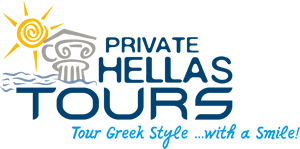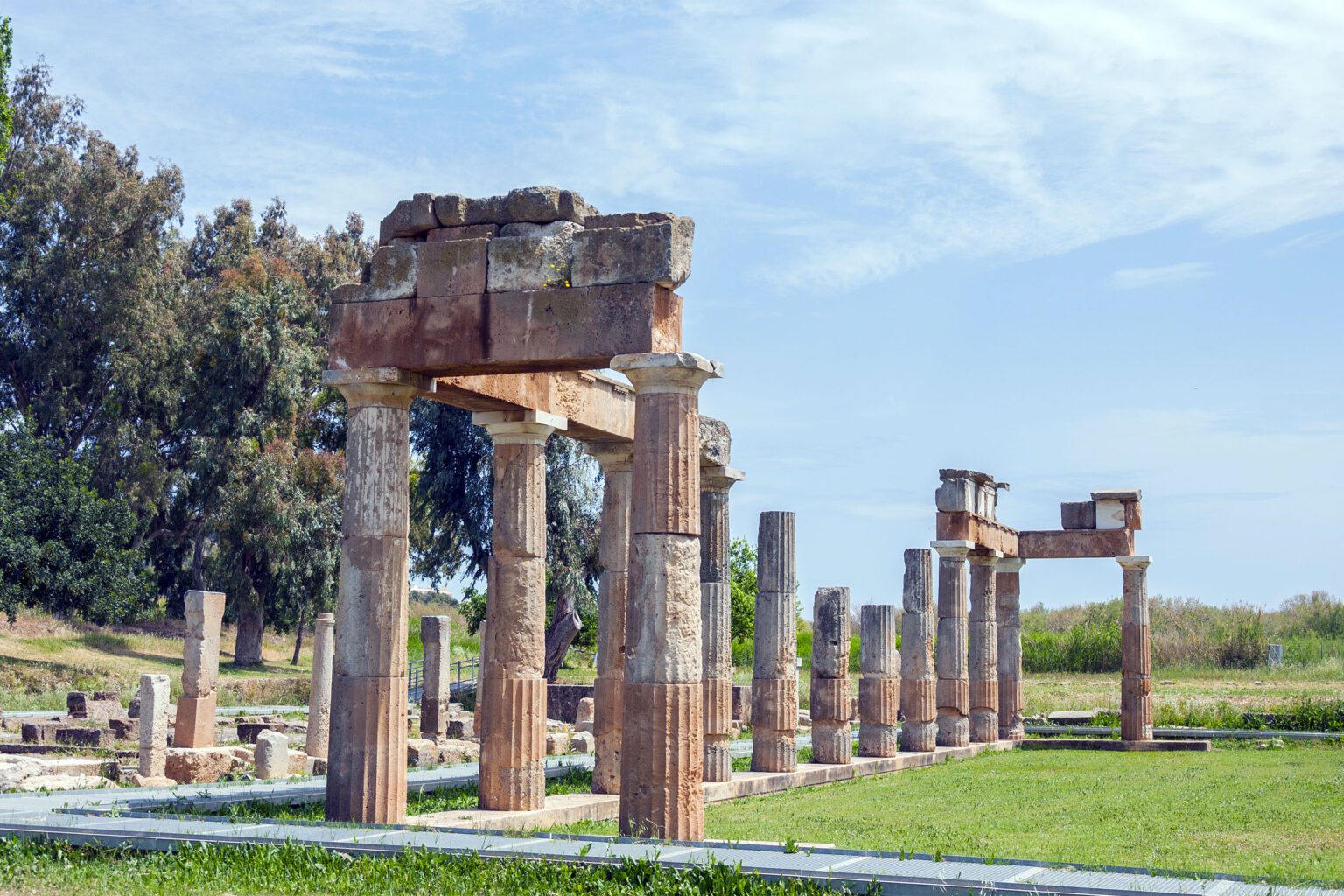We will visit:
- Marathon Lake
- The Tomb of Marathon
- Marathon Museum
- Brauron Artemis’ temple & Museum
- Cape Sounion
- Temple of Poseidon
We begin our tour by a beautiful coastal drive along the Saronic Gulf during which we get to see the most popular southern suburbs of Athens like Old Faleron, Glyfada, Voula, Varkiza, Vouliagmeni, Lagonissi, and Old Fokea.
We make a stop at Vouliagmeni Lake (“Sunken Lake”) a rare geophysical formation of brackish water lake fed by underground currents seeping through the mass of Mount Hymettus, functioning as a spa with an underwater cave never fully explored.
Moving in with our excursion we reach Cape Sounion and visit The Temple of Poseidon where ancient Greeks made sacrifices to the God of the sea Poseidon. It was originally made of 34 Doric style columns but the temple was destroyed in 480 B.C. by Persians and today only 12 are standing. The view from the edge of the cliff is extraordinary at the southest edge of Attica where the Saronic Gulf meets the Aegean Sea! If the weather is clear you can see the islands coming out of the dazzling waters during the day, or the sun diving in the dark blue waters at night, making this one of the most spectacular spots to capture by camera!
Afterwards, we drive up to Brauron. The city was named after the goddess. The Temple of Artemis Brauron (Doric style flourished in the 5th-4th c. B.C.) was among the most important sacred sites in the ancient times. Vravrona (or Brauron), about 20 km from Athens, was one of the 12 towns of Attica that was united to Athens by Theseus. According to a myth, this is the temple where Iphigeneia was brought by her brother Orestes, and served as a priestess in a local temple of Artemis. Iphigeneia had been transferred to Tauris by goddess Artemis herself, when she saved her from the sacrifice in Aulis.
Continuing our tour we reach the Marathon Lake (water from a drainage basin of 118 square kilometres with an average runoff of 14,400,000 m³ per year) at Marathon area. This is a lake formed by the Marathon Dam– height 54 m, width 28 m at the base and 4.5 m at the crest, length 285 m. It is constructed from concrete which is unique worldwide because its external cladding of white Pendelikon marble is the same marble used in construction of the Parthenon and the other buildings in the Acropolis. We will make a short stop there to take some photos of the lake being the main water source of Athens.
Approaching the Marathon plain we come across the Tymvos (Tomb) of Marathon –the burial ground of Athenian and Plataians solders who fell in the battle against the Persians (10.000 against 500.000 soldiers) in August 490 B.C. The outcome of the battle, which was victory for the Athenians, was announced to the city of Athens by a soldier named Pheidippides who run the distance from the Marathon Plain to Athens fully armed and died of exhaustion after announcing “Nenikikamen” (we have won). The worldwide known Marathon Race was established in honor of this event.
Greek runner Spyros Louis won the Marathon Race at the first Olympic Games in Athens in 1896. Afterwards, we visit the Marathon Museum composed of five rooms with findings dated from Neolithic till after Roman period including the Trophy room.We have lunch at a traditional food restaurant.
Athenian Full day Coastal Tour Details
Duration : approx.9 hrs
Booking Request
Archaeological Museum of Marathon
Winter Season
From 1/11 until 31/3
OPENING HOURS
08:30 – 15:30, Tuesday closed
Summer Season
From 1/4 until 31/10
OPENING HOURS
08:30 – 15:30, Tuesday closed
Winter Season: 3€
In the winter season all visitors are entitled to a reduced ticket.
Ticket also includes visit to the archaeological site of Marathon.
Summer Season
Full: 6€
Reduced: 3€
Ticket also includes visit to the archaeological site of Marathon.
- March 6 (in memory of Melina Mercouri)
- April 18 (International Monuments Day)
- May 18 (International Museums Day)
- June 5 (International Enviroment Day)
- September 27 (International Tourism Day)
- October 28 (Greek National Holiday)
- The last weekend of September (European Heritage Days)
- Sundays from November 1st till March 31st
- The first Sunday of every month except July, August & September
- Cultural card holders
- Journalists
- Members of the ICOM-ICOMOS
- Persons accompanying blind & disabled
- Persons possessing a free admission card
- Tourist guides
- University students & students at Technological Educational Institutes or equivalent schools of E.U. & students at Schools of Tourist Guides
- Young people under 18 yrs old
- Soldiers carrying out military service
Your professional driver has limited knowledge of Greek history, mythology as well as contemporary life and traditions. He is not allowed by law to accompany you into the sites and museums; therefore he will be waiting for you at the agreed area.
Private Hellas Tours cooperates with professional, licensed private tour guides, that you can hire and will ride the same vehicle with you, accompany you to the sites and museums and give you detailed information on the history of the landmarks and historical sites.

